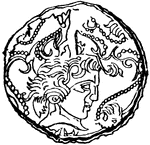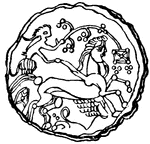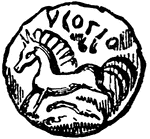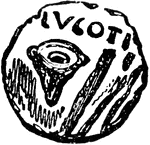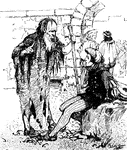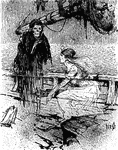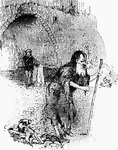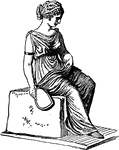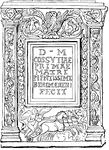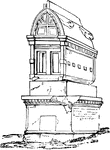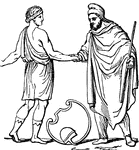
Pedum
"A shepherd's crook. On account of its connection with pastoral life, the crook is often seen in works…

Pelta
"A small shield, Iphicrates, observing that the ancient Clipeus was cumbrous and inconvenient, introduced…

Periscelis
"An anklet or bangle, worn by the Orientals, the Greeks, and the Roman ladies also. It decorated the…

Persona
"A mask. Masks were worn by Greek and Roman actors in nearly all dramatic representations. This custom…

Persona
"A mask. Masks were worn by Greek and Roman actors in nearly all dramatic representations. This custom…
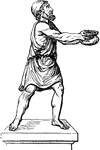
Pileus
"Any piece of felt; more especially, a skull-cap of felt, a hat. These seems no reason to doubt that…
Pons Cestius
"A bridge. As the rivers of Greece were small, and the use of the arch known to them only to a limited…

Pons Aelius
"A bridge. As the rivers of Greece were small, and the use of the arch known to them only to a limited…
Pons Ariminum
"A bridge. As the rivers of Greece were small, and the use of the arch known to them only to a limited…
Pons Trajan
"A bridge. As the rivers of Greece were small, and the use of the arch known to them only to a limited…

Puteal
"Puteal, properly means the enclosure surrounding the opening of a well, to protect persons from falling…
Pyxis
"A casket, a jewel-box. Quintilian produces this term as an example of catachresis, because it properly…
Retis
"A net. In hunting it was usual to extend nets in a curved line of considerable length, so as in part…
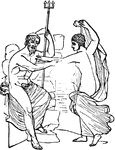
Reticulum
"A caul or coif of network for covering the hair, worn by women during the day as well as the night.…

Sceptrum
"Sceptrum, which originally denoted a simple staff or walking stick, was emblematic of station and authority.…
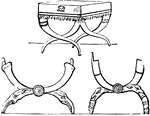
Sella
"Sella, the general term for a seat or chair of any description. Sella Curulis, the chair of state.…

Sella
"Sella, the general term for a seat or chair of any description. Sella Curulis, the chair of state.…

Sella
"Sella, the general term for a seat or chair of any description. Sella Curulis, the chair of state.…

Sella
"Sella, the general term for a seat or chair of any description. Sella Curulis, the chair of state.…

Signa Militaria
"Signa Militaria, military ensigns or standards. The most ancient standard employed by the Romans is…

Speculum
"Speculum, a mirror, a looking-glass. The looking-glasses of the ancients were usually made of metal,…

Spira
"Spira, the base of a column. in the Tuscan and the Roman Doric the base consisted of a single torus,…

Stadium
"A Greek measure of length, and the chief one used for itinerary distances. It was equal to 600 Greek…

Chrismatory
A receptacle for the chrism, or holy oil, used in the services or the Roman Catholic and Eastern Churches.

Diomede
"The following cut, from an ancient gem, represents Diomede in the act of bearing away the Palladium."…
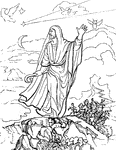
Roman augur
"Represents a Roman augur, with his litmus or divining staff, observing the signs in the heavens." —…

Roman Clypeus
"The following cut represents a Roman clypeus, from the column of Trajan. The projection in the centre…

Greek soldier
"The early Greeks used a very short sword, as may be seen from the preceding cut. The ancient Homeric…

Boxer with cestus
"The cestus was used by boxers from the earliest times. It consisted of thongs of raw ox-hide, or of…

Cestus
"The cestus used in later times, in the public games, was a most formidable weapon. It was frequently…
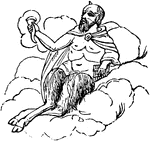
Syrinx
"Syrinx, the Pan's pipe, or Pandean pipe, was the appropriate musical instrument of the Arcadian and…
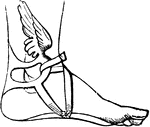
Talaria
"Talaria, small wings fixed to the ankles of Mercury, and reckoned among his attributes. In many works…
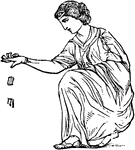
Talus
"Talus. The huckle-bones of sheep and goats were used to play with from the earliest times, principally…
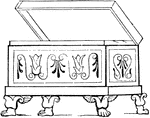
Ancient censer
"In makin Aeneas burn incense, Virgil follows the custom of his own time rather than historical verity."…
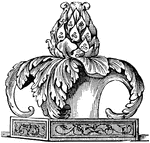
Thyrsus
"Thyrsus, a pole carried by Bacchus, and by Satyrs, Maenades, and others who engaged in Bacchic festivities…

Roman trumpet
"There appears to have been no essential difference in form between Greek and Roman or Tyrrhenian trumpets.…
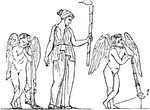
Torches
"On ancient monuments, the torch appears to be formed of wooden staves or twigs, either bound by a rope…

